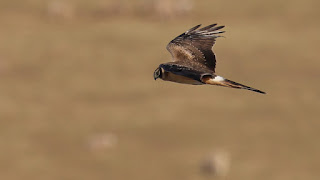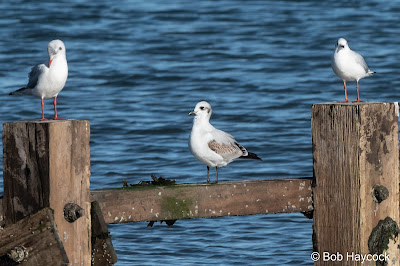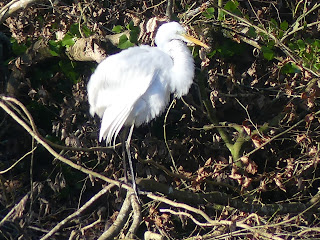Among the species input to BirdTrack was one of a Red Grouse in the Preselis on 13/9/23 entered by Skip Hook from Lancashire, presumably on a cycling holiday in Pembs. Naturally such a species was flagged up as needing more information as "unexpected in Pembrokeshire". It must surely have been a young pheasant or perhaps even a red-legged partridge but it was up on the the Preselis in potentially suitable habitat. So we asked Skip for more details and whether he was familiar with grouse and young pheasants etc.
This is his reply, received today:
Morning Bob, you recently contacted me to verify a Red Grouse recording which I reported on BirdTrack on 13/9/23. On the day I was cycling in an easterly direction in the Preseli hills along the ridge approximately between Carn Sian and Carn Menyn at 300m plus above sea level. As I was stopped taking a breather and admiring the views my attention was caught by the unmistakable sound of a Red Grouse on my RHS. I saw it flying low over the moor for about 50 to 60 yards before landing on the ground and disappearing from view. I was brought up near the Forest of Bowland in Lancashire and have seen many Red Grouse in my time. If the bird I saw wasn't a Red Grouse it was doing a pretty convincing imitation of one. I am pretty certain (bearing in mind the height and terrain) that it wasn't a young pheasant or red legged partridge as you suggest. Let me know if you need any more information. Unfortunately I don't have a photo to support what I saw.
Has anyone else seen a Red Grouse up on the Preselis last autumn or this winter?
As far as we know, the most recent records are those published in Birds of Pembrokeshire 1994 (Graham Rees and Jack Donovan) who say: "No more were recorded until up to three were reported from the Preseli Mountains in December 1952, one from there on 2 January 1953 and the remarkable record of one at Ramsey on 15 October 1975. None have been reported since".




.JPG)


.JPG)




.jpg)






.JPG)






























